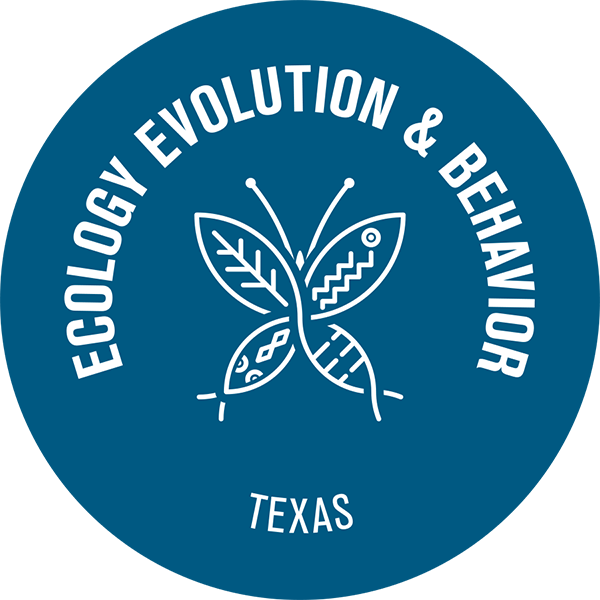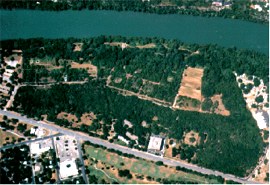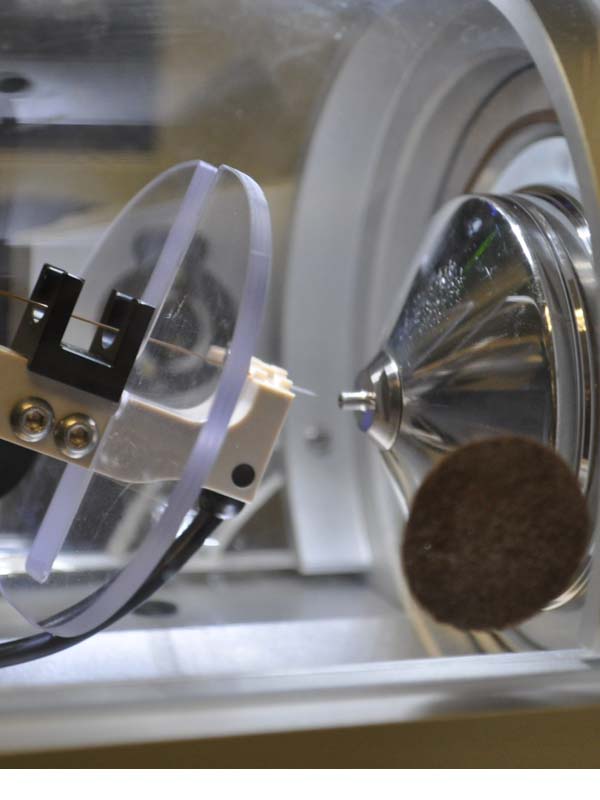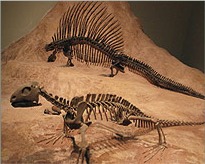Research Facilities
The Ecology, Evolution and Behavior Graduate Program has numerous laboratories and outdoor biology stations required for research programs. In addition, the University has several centers that provide research support for our programs.
The Biodiversity Center is home to one of the largest and most diverse systematics collections in the country with over 9 million specimens, as well as world-class field stations. The Biodiversity Center provides scientists with opportunities to interact with and learn from millions of preserved specimens, living organisms and ecosystems. Within the Center, you’ll find:
- The Brackenridge Field Laboratory is a unique urban research station located on 82 acres of land that borders the Colorado River along Lake Austin Boulevard, only 3.5 miles from the main campus. From the early days of the University of Texas, biologists have used this tract of land for research, teaching, and specimen collection. Since the establishment of the Field Laboratory in 1967, BFL has continued to evolve as a center for biodiversity research in Texas.
- The Stengl Biology Station (Lost Pines) is a 200-acre outdoor facility located 45 minutes southeast of campus. The area combines the characteristics of the typical grasslands and woodlands of central Texas and the oak-dominated temperate deciduous regions of eastern Texas, and includes a portion of the "Lost Pines", the westernmost population of loblolly pine. There are also bog-associated flowering plants, ferns and bryophytes at the station. This rich combination of Texas vegetation typical of old moister habitats with xeric elements which have since come in from the south provides an outstanding natural laboratory for studies in ecology and evolutionary biology.
- The Biodiversity Collections including collections of specimens of many organisms, genetic resources and the renowned Billie L. Turner Plant Resources Center, the largest herbarium (> 1 million plant specimens) in the southwestern US.
The new, state-of-the-art research Greenhouse and Growth Chamber complex is located on the roof of the Norman Hackerman Building on the main campus. There are additional research greenhouses and a large garden area at Brackenridge Field Laboratory, and additional grwoth chambers associated with individual professor's labs on the main campus.
The U.T. Marine Science Institute has laboratories and boat facilities on the Gulf of Mexico at Port Aransas, about 200 miles from Austin. This provides access to a wide variety of beach, bay, Gulf shelf, and open Gulf environments. Many of the Institute's facilities are still being restored after Hurricane Harvey made landfall there in 2017. When fully restored, the facilities will again include several laboratory buildings, classrooms, library, auditorium, a pier laboratory, dormitories and mess hall. Special facilities include a 105-foot research vessel (the Longhorn), a 57-foot trawler (the Katy), and outboard launches and skiffs. There are invertebrate, vertebrate, and algal reference collections and an extensive library.
The Institute for Cellular and Molecular Biology provides symposia and research support for multiple graduate programs in the life sciences and is the home and support base for the UT Graduate Programs in Biochemistry, Cell and Molecular Biology and Microbiology.
The Center for Biomedical Research Support houses a number of core facilities based in the College of Natural Sciences, including:
- The Proteomics Facility, which assists research in the detection, characterization, and quantification of biomolecules, and which provides a variety of proteomics analyses, as well as related protein support services;
- The Genomic Sequencing and Analysis Facility, which provides "next generation" DNA sequencing (NGS) services and conventional "Sanger" DNA sequencing services.
- the Biomedical Research Computing Facility, which provides research opportunities and support in the use of computational approaches to solving biological problems.
- The Microscopy and Imaging Facility, which provides extensive microscopy equipment and services for ultra-structural analysis of a variety of sample types.
The Environmental Science Institute, located on the main campus, is a multi-disciplinary institute for basic scientific research in environmental studies. Areas of research include remote sensing, climate change, watersheds, borderlands, urbanization, and ecology.
The Center for Computational Biology and Bioinformatics provides research support and opportunities for researchers interested in the use of computational approaches in solving biological problems. Areas of research include nucleic acid structure and function, molecular evolution, computational phylogenetics, proteomics, drug design, regulatory and developmental pathway inference.
Center for Brain, Behavior and Evolution
The Lady Bird Johnson Wildflower Center's 248 acres in south Austin include extensive public gardens of native plants, long-term research plots, and natural areas. The Center conducts or sponsors many public outreach activities that involve native plants. Center staff are also involved in plant conservation, landscape design and other consulting activities, research, and education, all centered around the use and preservation of native plants and ecosystems. The Center has welcomed UT researchers who conduct projects at the Center.
The Mass Spectroscopy Facility in the Department of Chemistry offers analyses of diverse biomolecules by several methods of mass spectroscopy coupled with chromatography methods.
The Animal Resources Center, a 14,000 sq. ft. facility devoted to housing a variety of animals used in research programs. In addition to the caging areas, there are surgical suites and laboratories. The resident populations include rodents, rabbits, dogs, cats, chickens, and quail.
Collections
The Biodiversity Center is home to one of the largest and most diverse systematics collections in the country with over 9 million specimens, as well as world-class field stations. The Biodiversity Center provides scientists with opportunities to interact with and learn from millions of preserved specimens, living organisms and ecosystems. Within the Center, you’ll find:
- The Brackenridge Field Laboratory is a unique urban research station located on 82 acres of land that borders the Colorado River along Lake Austin Boulevard, only 3.5 miles from the main campus. From the early days of the University of Texas, biologists have used this tract of land for research, teaching, and specimen collection. Since the establishment of the Field Laboratory in 1967, BFL has continued to evolve as a center for biodiversity research in Texas.
- The Stengl Biology Station (Lost Pines) is a 200-acre outdoor facility located 45 minutes southeast of campus. The area combines the characteristics of the typical grasslands and woodlands of central Texas and the oak-dominated temperate deciduous regions of eastern Texas, and includes a portion of the "Lost Pines", the westernmost population of loblolly pine. There are also bog-associated flowering plants, ferns and bryophytes at the station. This rich combination of Texas vegetation typical of old moister habitats with xeric elements which have since come in from the south provides an outstanding natural laboratory for studies in ecology and evolutionary biology.
- The Biodiversity Collections including collections of specimens of many organisms, genetic resources and the renowned Billie L. Turner Plant Resources Center, the largest herbarium (> 1 million plant specimens) in the southwestern US.
The Culture Collection of Algae (UTEX) includes approximately 3,000 strains of freshwater and marine algae for unrestricted distribution to interested investigators.
Billie L. Turner Plant Resources Center, houses over one million preserved specimens maintained in two herbaria: the C.L. Lundell collection, mostly of tropical plants, and the Texas collection. UT Austin has the largest herbarium in the southwestern United States, which is ranked among the top 5 university herbaria in the country.
Libraries
The General Libraries, with over 6.6 million volumes, constitute the fifth largest academic library in the U.S. Primary literature is available in hard-copy at the libraries, as well as e-journals via the web.
The Life Science Library contains 125,000 volumes and over 1800 journal subscriptions.
The Mallett Chemistry Library has over 50,000 volumes and over 400 journal subscriptions. Both libraries are equipped for computer searching of national databases.
Store Rooms
TX Shop - https://financials.utexas.edu/resources/administrative-applications/about-txshop
Printing Facilities
Biodiversity Center - https://biodiversity.utexas.edu/resources/poster-printing
Other Facilities
The Texas Advanced Computing Center designs and operates some of the world's most powerful computing resources.
Glass Shop - https://cm.utexas.edu/resources/department-facilities/glass-shop
Machine Shop - https://ph.utexas.edu/research/core-college-facility
ITS - https://it.utexas.edu/










